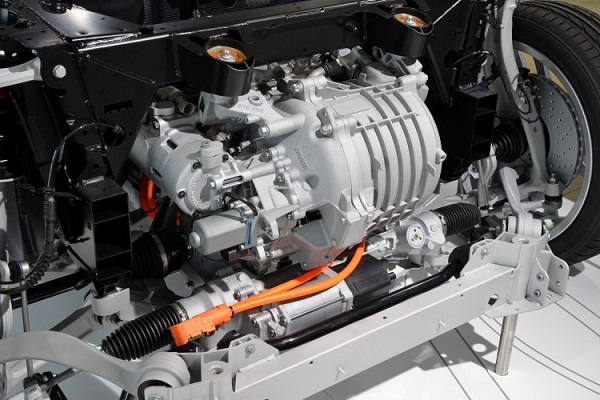Do Electric Cars Have Gears? No. Here’s Why
After decades of driving conventional vehicles, one gets used to the idea of shifting gears, multispeed transmissions an absolute necessity in combination with an internal combustion engine. In an electric vehicle, perhaps one comes to the conclusion that a multispeed transmission would be a given, but practically none of them do. Are electric vehicle transmissions necessary to improve performance? First, let’s take a look at why we have multispeed transmissions in the first place.
Khodrocar - Actually, the very first production automobile, the 1886 Benz Patent Motorwagen, had a single-speed transmission and clutch. Then again, its engine generated less than 1 hp and it had a top speed of about 10 mph. Today, with engines pushing 1,000 hp and tops speeds over 200 mph, five- and six-speed transmissions aren’t at all uncommon, automakers are toying with transmissions with up to ten gear ratios, and CVT (continuously-variable transmissions) have infinite gear ratios, but why?

The problem is that the ICE (internal combustion engine) only generates usable torque and power in a narrow band of engine speeds. To accelerate the vehicle, multispeed transmissions step that down, in varying gear ratios, to keep the engine in its power band. Keeping the engine in its power band also proves to be the most efficient and durable. An engine, in first gear, can easily accelerate a car to 30 mph, but would also shake itself to bits attempting to accelerate to highway speed. Likewise, that same engine would hardly be able to accelerate from a stop in 6th gear.
Interestingly, electric motor-generators (MG) generate 100% of their torque at very low speeds, DC MGs near stall (zero rpm), and AC MGs around 1,000 rpm, as a general rule. As rpms increase, torque falls off at a fairly linear rate, at the same time that power is increasing. According to an ORNL (Oak Ridge National Laboratory) Evaluation of the 2004 Toyota Prius (PDF), for example, the MG generates up to 300 N•m of torque around 1,500 rpm, trailing off to about 50 N•m at 6,000 rpm. At its most-efficient, 93%, the MG is pushing only 100 N•m at 2,250 rpm, perfect for cruising. In any case, a multispeed electric vehicle transmission is unnecessary because even 100 N•m is plenty of torque at cruising speed.
Of course, this doesn’t mean that electric cars couldn’t have gears, but they aren’t necessary. First, given MG torque / power / rpm characteristics, they’re perfect for transportation.
Source: Inside EVs
Latest News


